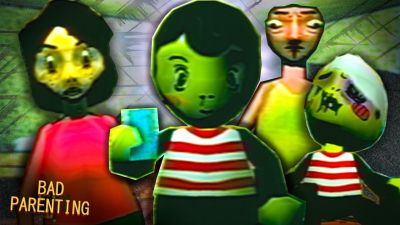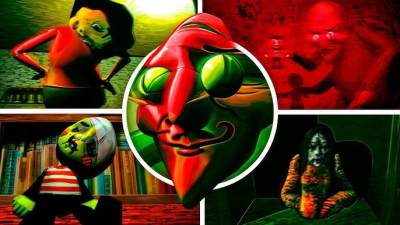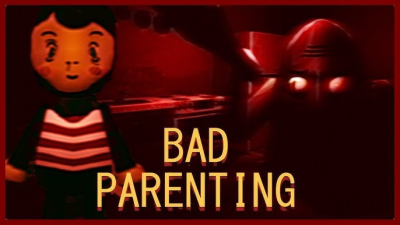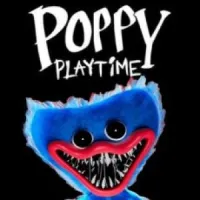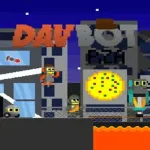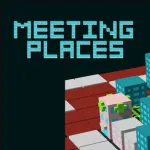Bad Parenting
When I first booted up Bad Parenting 1: Mr. Red Face, I was immediately drawn into an experience that defied conventional expectations. The game exudes a quirky charm and unconventional humor that promised an adventure far beyond the usual fare. As someone who appreciates a good mix of absurdity and satirical commentary, I was intrigued by the title alone. My initial encounter was filled with a blend of curiosity and caution as I braced myself for a narrative that felt both bizarre and unexpectedly familiar.
The Offbeat Narrative and Its Underlying Satire
One of the standout aspects of Mr. Red Face is the narrative that does not hold back from exposing the grittier, more humorous sides of parenting. I found the storyline to be as whimsical as it is sardonic, tackling the challenges of raising an unconventional family in a brilliantly warped world. The game cleverly satirizes the everyday struggles of parenthood, all while wrapping them in layers of absurdity that make you both laugh and reflect. Every dialogue and in-game event feels imbued with a tongue-in-cheek critique of societal norms, and I appreciated the self-awareness the developers embedded throughout the script.
Engaging Gameplay Mechanics with a Twist
What truly captivated me was the gameplay, which is designed to oscillate between structured challenge and unpredictable spontaneity. I found that the mechanics are deep and innovative, inviting players to engage with situations in unconventional ways. Steering through the chaos of family life in the game, I encountered puzzles and mini-games that pushed my problem-solving skills to the edge. The way the game captures the unpredictability of parenting—through a series of dynamic challenges that evolve as the story progresses—left me both entertained and thinking. It is not a straightforward sandbox experience; instead, it offers layers where each choice seems to echo into future game events, making every decision feel weighty and significant.
Exploration of Character Archetypes and Interpersonal Dynamics
Delving into the character development, I found Mr. Red Face to be a character that walks the line between endearing and exasperating. His expressions, laced with shades of embarrassment and irony, mirror the real-life struggles many face when dealing with societal pressures combined with personal quirks. The game extends its focus to the entire ensemble of characters, each depicted with unique traits aimed at accentuating the satirical nature of the narrative. Interactions among the characters often feel reminiscent of real, chaotic family dinners, infused with humor and a touch of poignant reality. Engaging with each character allowed me to appreciate the nuanced storytelling that underpins every facet of the game’s world.
Intriguing Interface and Responsive Controls
The interface of Bad Parenting 1: Mr. Red Face is thoughtfully designed to be both immersive and user-friendly. My personal experience with the controls was one of fluidity and responsiveness, ensuring that the sometimes rapid transitions between different game modules never left me frustrated. Customizable control options and a well-laid-out interface contributed to an overall smooth experience, with the game’s design allowing me to focus more on the unfolding narrative rather than wrestling with clunky mechanics. The gravity of each decision is heightened by the reliability of the controls, making every moment feel that much more significant.
Visual Aesthetics and Artistic Flair
The visual style of the game is a delightful blend of cartoonish elements and striking atmospheric effects. I was pleasantly surprised by the level of detail in the art direction. Every backdrop, character expression, and animated cutscene is crafted with a blend of humor and artistic precision. The vibrant color palette contrasts with occasional darker themes, reflecting the dual nature of parenting, where joy and chaos coexist. As I navigated through various environments, the visual aesthetic consistently engaged my senses, inviting me to immerse myself fully in its bizarre yet captivating world.
Dynamic Audio Landscapes that Engage the Senses
Accompanying the striking visuals was a dynamic audio landscape that enriched every facet of gameplay. I experienced sounds that were both meticulously selected and playfully exaggerated. The background music shifts effortlessly between tones that range from light-hearted amusement to dramatic tension, depending on the moment. Sound effects are not only perfectly timed but also serve to enhance the comedic rhythm of each scene. In moments of high tension or absurdity, the musical cues amplified the overall mood, making the interactive experience both engaging and emotionally resonant. This careful layering of audio was one of the many details that contributed to the game’s robust atmosphere.
Humor that Reflects Real-Life Paradoxes
What I found particularly enjoyable was the humor integrated into every aspect of the gameplay and narrative. The game does not shy away from highlighting the ironies of everyday life. Its jokes are embedded in the dialogue and situations, often delivering a biting commentary on the misadventures of raising a family. The humor is not only situational but also evolves through the interactions among characters, each uniquely flawed yet relatable. Every unexpected twist or quirky challenge is laced with wit that keeps me smiling throughout the gameplay. This constant interplay of irony and satire creates an environment where laughter and introspection maintain a delicate balance.
Inventive Level Design and Puzzle Integration
The level design in Bad Parenting 1: Mr. Red Face is another aspect that struck me with its originality and thoughtfulness. I encountered levels that are crafted to test both my intellectual and reflexive abilities. The stages are constructed with a mix of environments that range from mundane domestic settings to fantastically reimagined worlds that feel like a child’s dream mixed with surrealist art. The clever incorporation of puzzles within these levels adds an extra dimension to the gameplay, pushing me to think creatively and use the resources provided in unexpected ways. The game continuously challenges my perceptions of space, time, and cause and effect in a way that is both playful and intellectually stimulating.
Immersive World-Building and Social Commentary
As I wandered through the intricately layered world, I was struck by the depth of the social commentary interwoven into the environmental storytelling. Every scenario, item, and character interaction appears to be steeped in themes that mirror the complexities of modern society. It felt as if the developers had created an entire universe where the struggles and idiosyncrasies of daily life are brought to the forefront. The world-building goes beyond the trivial; it invites me to question norms while offering a humorous take on familiar societal structures. By engaging with each facet of this world, I could sense there was an underlying narrative that critiqued the absurdities of life—making every moment paced with purpose and adding layers to the overall experience.
Technical Performance and Optimized Coding
From a technical perspective, Bad Parenting 1: Mr. Red Face impresses with its stable performance and smooth execution. I encountered very few glitches, and when minor hiccups occurred, they did not detract from the overall flow of the game. The developers seem to have invested significant effort in optimizing the code and ensuring that even the more complex elements of the game run seamlessly. The synchronization between real-time events, character animations, and environmental interactions is precise, thereby enhancing immersion. Whether playing on higher or lower-end hardware, I appreciated the consistent performance that kept the focus firmly on the gameplay rather than technical distractions.
Unpredictable Challenges and Reflective Replayability
The unpredictable nature of the challenges in the game plays with my expectations in delightful ways. Each session felt different, as if the game was designed to adapt and alter as I progressed further. This variable structure not only increases the replay value but also reinforces the themes of unpredictability and control—or the lack thereof. I was constantly intrigued by how previous decisions would yield unexpected consequences later. It gave the experience a fresh outlook every time I returned to the game, making it impossible to settle into a passive play mode. Rather, each session was filled with new puzzles, interactions, and narrative twists that encouraged me to explore different strategies and approaches.
Interactive Storytelling and Emotional Engagement
Throughout my time with Bad Parenting 1: Mr. Red Face, I became attuned to its unique form of interactive storytelling. The game continuously engages me by presenting emotionally charged moments interwoven with subtle humor. I felt moments of genuine empathy as well as uncontrollable laughter during sequences that play on the absurdities of family life. The dialogue is cleverly written to oscillate between sentiment and satire, making me feel as though I was not only a player but an active participant in a living narrative. The balance between light-hearted escapades and moments of reflective emotional depth contributed significantly to the interactive experience, urging me to consider the game as both art and playful parody.
Exploration of In-Game Economy and Resource Management
A unique aspect of my experience with the game was its inventive approach to resource management. While not a traditional economic simulator, it weaves subtle elements of in-game currency and resource allocation into the narrative. I had to make choices about managing scarce resources that paralleled the real-life challenges of balancing a household. These decisions, though presented in a game context, brought a layer of strategy that enriched my overall experience. The mechanics revolving around resource management pushed me to optimize my strategies in various scenarios, whether tackling everyday challenges or embarking on specifically crafted quests that required careful planning and execution.
Layered Social Interactions and Community Feel
The game also projects a sense of community, reflecting back on the importance of social interactions in everyday life. During my ventures, I encountered a cast of characters with whom forming bonds was not only beneficial for progression but also deeply satisfying from a narrative perspective. I got the feeling that these interactions were designed to mimic the unpredictable and often humorous nature of real-life social gatherings. Whether navigating awkward family dynamics or dealing with external pressures, every conversation was laden with subtleties that made the social fabric of the game feel genuine. The interplay among characters provided an enriching layer that contributed vastly to the game’s lively and immersive community vibe.
Balancing Chaos and Order through Gameplay Dynamics
As I progressed, I noticed a constant tension between chaos and order—a theme that is unmistakably central to the game. The mechanics are set up to oscillate between moments of overwhelming unpredictability and carefully structured challenges. I embraced this duality, which mirroring the dynamics of real-life parenting where spontaneity and routine coexist in surprisingly balanced extremes. It was fascinating to manage moments when the game would delightfully throw unexpected obstacles in my path only to allow for periods of calm and strategic planning. This oscillation kept the gameplay continuously engaging, ensuring that I was always on my toes, never quite knowing if the next moment would be a wild burst of chaos or a moment of well-earned respite.
Customization and Adaptive Game Strategies
The flexibility offered by the game through its customization options plays a pivotal role in enhancing my personal journey. The developers have integrated a system that allows me to tweak various parameters, from the difficulty settings to aspects of the character’s appearance and progression. This customization not only advanced my strategic involvement but also deepened my connection with the narrative, as I could tailor elements that resonated with my personal style. Moreover, the adaptive strategy mechanism ensured that even as I changed settings, the core experience remained challenging and refreshing. The adaptive design works in concert with the unpredictable challenges, ensuring that the game remains complex and dynamic throughout the entire play session.
Interactive Environment and Responsive World Elements
The environment in Bad Parenting 1: Mr. Red Face is much more than a static backdrop—it reacts, evolves, and sometimes even challenges me in unexpected ways. As I moved through each area, I found numerous interactive elements that not only added depth to the story but also engaged me on a sensory level. From seemingly insignificant details that became crucial at unexpected moments to environmental cues that subtly guided my decisions, every element of the world felt alive. This responsive design gave me the sensation of being part of an evolving ecosystem, where each action contributed to the broader tapestry of the game. It is these moments of interaction—be it a subtle change in lighting, reactive dialogue cues, or even a seemingly trivial object—that enrich the overall intricacy of the experience.
Reflecting on the Integration of Humor, Strategy, and Emotion
Throughout my hours spent with Bad Parenting 1: Mr. Red Face, I have found that the game strikes a phenomenal balance between humor and strategy while also bringing a layer of emotional connection. The careful calibration of these aspects is evident in every interaction and challenge encountered along the way. I experienced moments that made me laugh loud and times when I had to concentrate hard to overcome a particularly challenging puzzle. This tight integration of varied elements ensures that the adventure is never monotonous, keeping me constantly engaged and invested in the outcome of each stage. The developers have succeeded in weaving together what might seem irreconcilable themes into a tapestry that feels both coherent and extraordinarily entertaining.
To download the app, you will get links to the Official Website and/or official digital markets.
